Best Time to Visit Kedarnath: Kedarnath, one of the holiest Hindu pilgrimage sites nestled in the Garhwal Himalayas of Uttarakhand, attracts millions of devotees and adventure seekers annually. This sacred temple town, perched at an altitude of 3,583 meters, forms part of the revered Char Dham Yatra and houses one of the twelve Jyotirlingas of Lord Shiva.
The journey to Kedarnath combines spiritual fulfillment with breathtaking Himalayan landscapes, making it a bucket-list destination for travelers worldwide. Planning your pilgrimage requires careful consideration of weather patterns, accessibility, and personal comfort levels, as the harsh mountain climate significantly influences the travel experience.
Understanding the best time to visit Kedarnath ensures you witness this divine destination at its most accessible and spiritually vibrant, transforming your pilgrimage into an unforgettable journey of faith and natural wonder.
Also Read: How to Reach Kedarnath
Climate and Seasonal Overview
Kedarnath experiences an extreme alpine climate characterized by short summers, harsh winters, and unpredictable weather patterns typical of high-altitude Himalayan regions. The temple remains accessible only from late April or early May through October or early November, closing during winter when heavy snowfall makes the region completely inaccessible and temperatures plummet below freezing. Understanding these climatic variations is essential for planning your travel to Kedarnath and ensuring a safe, comfortable pilgrimage experience.
The region experiences three distinct periods during its operational season:
- Early Season (May to June): Temperatures range from 5°C to 18°C with lingering snow on higher trails and occasional showers. This period sees moderate crowds and fresh mountain scenery following winter.
- Monsoon Season (July to August): Heavy rainfall with temperatures between 8°C to 15°C creates challenging trekking conditions. This period experiences fewer pilgrims due to landslide risks and slippery trails.
- Post-Monsoon (September to October): Clear skies and pleasant temperatures ranging from 3°C to 15°C offer the most stable weather. This peak season attracts maximum pilgrims seeking comfortable conditions.
The peak tourist season at Kedarnath occurs from September through early October when weather conditions stabilize after monsoon and before winter closure. May and June also attract significant crowds, especially during auspicious Hindu months and festivals. The low season coincides with the monsoon months of July and August when unpredictable weather and increased landslide risks deter many pilgrims despite the lush green landscapes.
Monthly Climate Data for Kedarnath
| Month | Average Temperature (°C) | Rainfall (mm) | Weather Condition | Temple Status |
|---|---|---|---|---|
| January | -8 to 2 | 80-120 (snow) | Extreme cold, heavy snow | Closed |
| February | -6 to 4 | 100-150 (snow) | Very cold, snow-covered | Closed |
| March | -4 to 8 | 120-180 (snow/rain) | Cold, melting snow | Closed |
| April | 0 to 12 | 80-120 | Cool, preparation for opening | Closed/Opening |
| May | 5 to 18 | 60-100 | Pleasant, early season | Open |
| June | 8 to 20 | 100-150 | Mild, comfortable | Open |
| July | 10 to 15 | 250-400 | Heavy rain, monsoon | Open |
| August | 10 to 15 | 300-450 | Continuous rain, wet | Open |
| September | 8 to 14 | 150-200 | Pleasant, clearing skies | Open |
| October | 3 to 12 | 80-120 | Cool, clear weather | Open |
| November | -2 to 8 | 60-100 (snow) | Cold, closing season | Closed |
| December | -10 to 0 | 100-150 (snow) | Extreme cold, heavy snow | Closed |
Best Months to Visit Kedarnath
Determining the best time to visit Kedarnath depends on your priorities regarding weather comfort, crowd levels, spiritual significance, and adventure preferences. The optimal window for most pilgrims spans from May through June and September through October, when the temple remains accessible and weather conditions support comfortable travel. These periods offer distinct advantages that cater to different traveler needs and expectations.
May to June represents the early pilgrimage season when the temple opens after winter closure, typically in late April or early May coinciding with Akshaya Tritiya. This period showcases fresh mountain scenery with snow still visible on higher peaks and surrounding glaciers. Temperatures remain pleasant during daytime, ranging from 10°C to 18°C, though nights can drop to 5°C requiring warm clothing. The trek route displays blooming rhododendrons and alpine flowers, creating a colorful landscape. However, occasional rain showers and cloudy weather can occur, and some high-altitude trails like Vasuki Tal may remain snow-covered and inaccessible.
September to October emerges as the absolute best period for visiting Kedarnath, offering the most stable weather conditions and clear mountain views. The monsoon retreats by early September, leaving behind rejuvenated landscapes with full-flowing waterfalls and lush vegetation. Temperatures range from 8°C to 14°C during daytime with crisp, clear air providing spectacular views of surrounding peaks including Kedarnath, Kedar Dome, and Bharatekuntha. The sky remains mostly clear, perfect for photography and enjoying panoramic Himalayan vistas. This period attracts maximum pilgrims, resulting in longer waiting times for darshan but also creating a vibrant spiritual atmosphere with collective devotional energy.
Must Read: Things to Do in Kedarnath
Top 5 Months to Visit Kedarnath
- September: The post-monsoon month offers the perfect combination of clear weather, comfortable temperatures, and spectacular mountain views. The trek becomes easier with dry trails and stable conditions. Waterfalls cascade at full strength, and the rejuvenated landscape appears at its greenest. The spiritual energy intensifies as pilgrims rush to complete darshan before the temple closes for winter.
- October: The final operational month provides crisp mountain air and excellent visibility for viewing snow-capped peaks. Early October remains relatively crowded, but crowds thin toward month-end as closure approaches. The approaching winter brings a sense of urgency and spiritual intensity to the pilgrimage. Temperatures drop significantly, especially during early mornings and nights, requiring adequate warm clothing.
- May: The temple opening month carries special significance with grand ceremonies marking the beginning of the pilgrimage season. Fresh mountain scenery following winter showcases nature’s renewal with blooming flowers and flowing streams. The cooler temperatures compared to June make trekking more comfortable. Akshaya Tritiya celebrations during this month attract devotees seeking auspicious darshan.
- June: This month offers the warmest temperatures of the season, making it ideal for pilgrims sensitive to cold weather. Longer daylight hours provide more time for travel and exploration. The weather remains relatively stable before monsoon onset. However, late June may experience pre-monsoon showers, and the increasing heat at lower altitudes can make the initial trek sections challenging.
- Early November: Though technically beyond the regular season, the temple closing ceremonies in late October or early November offer unique spiritual experiences for hardy travelers. Witnessing the rituals as the deity gets transported to Ukhimath for winter provides rare insights into temple traditions. However, this period requires preparedness for harsh weather, limited facilities, and potential early snowfall.
For comprehensive seasonal information about other Himalayan destinations, explore our detailed Best Time to Visit Guides covering various pilgrimage and adventure locations across Uttarakhand.
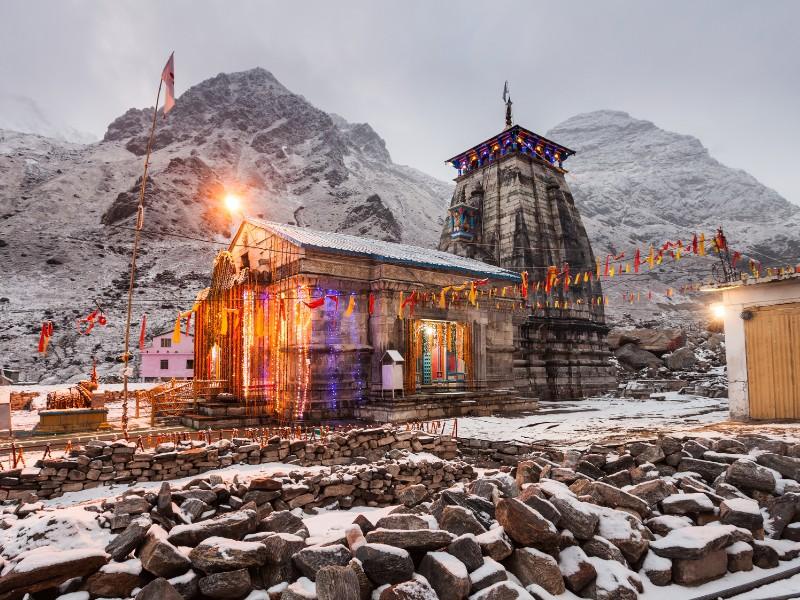
Things to Do in Each Season
The things to do in Kedarnath vary significantly across different periods of the operational season, with each offering unique experiences and challenges for pilgrims and travelers.
Early Season (May to June)
The opening months of the pilgrimage season combine comfortable weather with fresh mountain scenery, creating ideal conditions for both spiritual practices and nature appreciation.
- Attend the temple opening ceremonies (Kapal Mochan) featuring elaborate rituals performed by hereditary priests marking the beginning of the pilgrimage season
- Trek the Kedarnath route under pleasant temperatures with blooming rhododendrons lining the path and snow-covered peaks providing spectacular backdrops
- Visit Gandhi Sarovar (Chorabari Tal) to witness the glacial lake surrounded by snow with the Chorabari Glacier visible in all its pristine glory
- Participate in early morning and evening aartis at the temple experiencing the divine atmosphere with moderate crowd levels
- Explore Bhairav Temple located 500 meters uphill for panoramic views of the Kedarnath valley and surrounding Himalayan peaks
- Photography expeditions capturing fresh mountain landscapes, wildflowers in bloom, and the interplay of snow and emerging greenery
- Acclimatization walks around Kedarnath settlement helping your body adjust to the high altitude while enjoying mountain vistas
- Sample local cuisine including simple yet nourishing Garhwali preparations that provide energy for the high-altitude environment
- Interact with sadhus and spiritual seekers who converge at Kedarnath during this spiritually significant period
Monsoon Season (July to August)
The monsoon months present challenges but also showcase Kedarnath’s raw natural beauty for adventurous pilgrims willing to brave unpredictable weather.
- Experience the temple during the sacred Shravan month when millions of devotees undertake the pilgrimage despite difficult conditions
- Witness powerful waterfalls along the trek route cascading at full strength, creating dramatic natural spectacles
- Observe the lush green landscape transformed by monsoon rains with vibrant vegetation covering the mountains
- Participate in special rituals including Rudra Abhishek performed extensively during the auspicious Shravan month
- Indoor spiritual activities including meditation and prayer during rain breaks when outdoor movement becomes restricted
- Photography in unique conditions capturing dramatic cloud formations, mist-covered valleys, and rain-washed mountains
- Experience fewer crowds with shorter waiting times for darshan compared to peak season months
- Stay flexible with travel plans as weather can change rapidly requiring adjustments to trekking and visiting schedules
Post-Monsoon Season (September to October)
The autumn months provide the most favorable conditions for the complete Kedarnath experience, combining perfect weather with spiritual intensity.
- Trek to high-altitude destinations including Vasuki Tal (4,135 meters) with clear weather and stable conditions ideal for challenging hikes
- Enjoy clear mountain views with excellent visibility for photography and appreciating the surrounding Himalayan landscape
- Participate in temple rituals during peak season when the collective spiritual energy creates a powerful devotional atmosphere
- Explore nearby attractions including Triyuginarayan Temple, Sonprayag, and Gaurikund under comfortable weather conditions
- Meditation and contemplation at Shankaracharya Samadhi and other quiet spots benefiting from the crisp mountain air
- Sunrise and sunset viewing from various vantage points around Kedarnath with clear skies offering spectacular light displays
- Wildlife spotting opportunities as Himalayan fauna becomes more active and visible during pleasant weather
- Extended photography sessions capturing the temple, landscapes, and pilgrimage activities under ideal lighting conditions
- Interact with diverse pilgrims from across India and abroad, sharing spiritual experiences and cultural exchanges
- Witness temple closing preparations in late October including special ceremonies as the deity prepares to shift to Ukhimath for winter
Festivals and Events
Festivals in Kedarnath align closely with the Hindu calendar and hold profound spiritual significance for devotees undertaking this sacred pilgrimage. The temple’s operational season encompasses several major religious occasions that enhance the pilgrimage experience manifold.
Akshaya Tritiya (late April or early May) marks the temple opening day with grand ceremonies that attract thousands of pilgrims seeking the auspicious first darshan of the season. The temple doors open with elaborate rituals performed by the head priest (Rawal) as the deity returns from its winter sojourn in Ukhimath. This day carries special significance as any religious activity performed during Akshaya Tritiya is believed to bring eternal benefits. Pilgrims consider witnessing the opening ceremonies as tremendously fortunate and spiritually rewarding.
Shravan Month (July to August) represents the most sacred period in the Hindu calendar for Shiva worship, transforming Kedarnath into a hub of intense devotional activity. Despite challenging monsoon conditions, millions of devotees undertake the pilgrimage during this month, many carrying holy Ganga water from Haridwar to perform abhishekam at the Jyotirlinga. Special prayers, extended aartis, and continuous chanting create a spiritually charged atmosphere. Mondays during Shravan hold particular significance with increased crowds and elaborate worship ceremonies.
Major Festivals and Events Calendar
| Festival/Event | Approximate Dates | Religious Significance | Visitor Experience |
|---|---|---|---|
| Kapal Mochan (Temple Opening) | Late April/Early May | Beginning of pilgrimage season | Grand ceremonies, first darshan |
| Akshaya Tritiya | April/May | Auspicious opening day | Massive crowds, special rituals |
| Shravan Somvar | July/August (Mondays) | Most sacred Shiva worship days | Intense devotional atmosphere |
| Raksha Bandhan | August | Brother-sister bond celebration | Family pilgrims, festive mood |
| Janmashtami | August/September | Lord Krishna’s birthday | Special prayers, cultural programs |
| Ganesh Chaturthi | August/September | Lord Ganesha worship | Beginning of autumn festivities |
| Dussehra | September/October | Victory of good over evil | Cultural celebrations, special aartis |
| Temple Closing Ceremony | Late October/Early November | End of pilgrimage season | Farewell rituals, deity transfer |
Temple Closing Ceremonies in late October or early November mark the end of the operational season with emotional farewell rituals. The utsav murti (procession deity) is carried down to Ukhimath village where worship continues throughout the winter months. Devotees consider witnessing these closing ceremonies as spiritually significant, though weather conditions can be extremely harsh. The ceremonies include special prayers, the final aarti of the season, and the symbolic closure of the temple doors until next spring.
Tips for Travelers
Planning your travel to Kedarnath requires thorough preparation to ensure a safe, comfortable, and spiritually fulfilling pilgrimage experience in this challenging high-altitude environment.
Essential Preparation and Documentation
- Complete online registration at the official Uttarakhand government portal before starting your journey with valid photo identification
- Carry multiple photocopies of ID proofs, registration confirmation, and emergency contact information
- Obtain medical clearance if you have pre-existing health conditions, particularly heart or respiratory issues
- Purchase comprehensive travel insurance covering high-altitude trekking and medical emergencies
Packing Essentials for High-Altitude Pilgrimage
- Layered warm clothing including thermal innerwear, fleece jackets, and waterproof outer shells even during summer months
- Sturdy trekking shoes with excellent grip and ankle support; break them in before the journey to avoid blisters
- Woolen caps, gloves, and socks for cold mornings, evenings, and high-altitude locations
- Lightweight rain poncho or waterproof jacket for unexpected weather changes common in mountains
- Personal first aid kit including altitude sickness medication (Diamox after medical consultation), pain relievers, and bandages
- Sunscreen with high SPF, lip balm, moisturizer, and sunglasses to protect against intense mountain UV radiation
- Reusable water bottle, energy bars, dry fruits, and glucose for sustained energy during the trek
- Flashlight or headlamp with extra batteries for early morning temple visits and power outages
- Basic toiletries, hand sanitizer, and wet wipes as facilities remain limited at high altitude
Health and Safety Considerations
- Acclimatize properly by spending a night at Gaurikund or Guptkashi before attempting the high-altitude trek
- Start the trek early morning between 5:00 AM and 7:00 AM to complete the journey during daylight hours
- Maintain a steady, slow pace during the ascent allowing your body to adjust to decreasing oxygen levels
- Recognize altitude sickness symptoms including headache, nausea, dizziness, and breathlessness; descend immediately if severe
- Stay hydrated throughout the trek but avoid overexertion and take regular breaks at designated rest points
Cultural Etiquette and Respect
- Dress modestly covering shoulders and knees when visiting the temple and surrounding sacred areas
- Remove footwear before entering temple premises and follow all instructions from temple authorities
- Maintain silence inside the temple complex and avoid creating disturbances during religious ceremonies
- Respect photography restrictions particularly inside the main sanctum and during specific rituals
- Avoid littering anywhere along the trek or temple area; carry reusable bags for waste disposal
Transportation and Booking
- Book helicopter services well in advance (2-3 months) during peak season through authorized operators only
- Reserve accommodation at Kedarnath, Gaurikund, or Guptkashi at least one month ahead during peak season
- Hire ponies, palanquins, or pithoos (porters) from authorized counters displaying fixed rates to avoid disputes
- Keep emergency contact numbers including local police, medical facilities, and helicopter rescue services readily accessible
For more detailed planning resources and destination guides, visit the official Uttarakhand Tourism Website: https://uttarakhandtourism.gov.in/
Accommodation and Cost Considerations
Understanding accommodation options and associated costs helps in planning an appropriate budget for your Kedarnath pilgrimage across different seasons.
Kedarnath offers basic accommodation facilities operating only during the pilgrimage season from May through October. The options range from free or minimal-cost dharmashalas to relatively comfortable government guesthouses and private lodges. Facilities remain basic compared to regular tourist destinations due to the high altitude, limited infrastructure, and harsh climate. Most accommodations lack continuous electricity, running hot water, and modern amenities that travelers might expect elsewhere.
Seasonal Pricing Variations significantly impact accommodation costs at Kedarnath. Peak season months of September and October, along with May and June, command premium rates with limited availability. Monsoon months of July and August offer lower rates and better availability but come with weather-related challenges. Advance booking becomes crucial during peak periods, particularly around major festivals and auspicious dates when demand far exceeds supply.
Accommodation Options and Approximate Costs
| Accommodation Type | May-June (Peak) | July-August (Monsoon) | September-October (Peak) | Facilities Included |
|---|---|---|---|---|
| Dharmashalas/Ashrams | ₹200-500/bed | ₹150-400/bed | ₹300-600/bed | Dormitory, basic bedding, common washrooms |
| GMVN Tourist Rest House | ₹2,000-3,000/room | ₹1,500-2,500/room | ₹2,500-3,500/room | Private rooms, attached bath, meals available |
| Private Guesthouses | ₹1,500-3,000/room | ₹1,000-2,000/room | ₹2,000-3,500/room | Variable facilities, backup electricity |
| Seasonal Tent Camps | ₹2,500-4,000/tent | ₹2,000-3,000/tent | ₹3,000-5,000/tent | Basic bedding, limited services |
| Gaurikund Hotels | ₹1,000-3,500/room | ₹800-2,500/room | ₹1,500-4,000/room | Better facilities, hot water, restaurants |
Booking in advance proves essential during peak season when thousands of pilgrims converge simultaneously, creating severe accommodation shortages. Government accommodation through GMVN can be booked online through their official website, while private properties require direct contact or booking through travel agents. Many pilgrims choose to stay at Gaurikund, which offers more comfortable facilities and serves as the base for starting the trek early morning. This strategy also helps with acclimatization before ascending to higher altitudes.
Budget-conscious travelers can significantly reduce costs by choosing dharmashalas or ashrams that provide basic shelter at minimal rates. Carrying sleeping bags and personal bedding adds comfort in basic accommodations where provided bedding might be limited. Food costs remain moderate with simple meals available at various eateries, ranging from ₹100 to ₹300 per meal depending on the establishment and menu choices.
Conclusion
The best time to visit Kedarnath ultimately depends on your preferences regarding weather comfort, crowd tolerance, and flexibility with challenging conditions. September and October emerge as the optimal months offering stable weather, clear mountain views, and excellent trekking conditions despite larger crowds.
May and June provide comfortable alternatives with fresh mountain scenery and moderate temperatures, ideal for pilgrims seeking pleasant conditions. Understanding seasonal variations, preparing adequately, and maintaining realistic expectations ensure your Kedarnath pilgrimage becomes a transformative spiritual journey rather than a challenging ordeal.
Plan your visit carefully considering both practical aspects and spiritual aspirations, book accommodations and travel services well in advance, and prepare thoroughly for high-altitude challenges. Start planning your sacred journey to Kedarnath today and experience the divine presence of Lord Shiva in one of the most spectacular Himalayan settings imaginable.
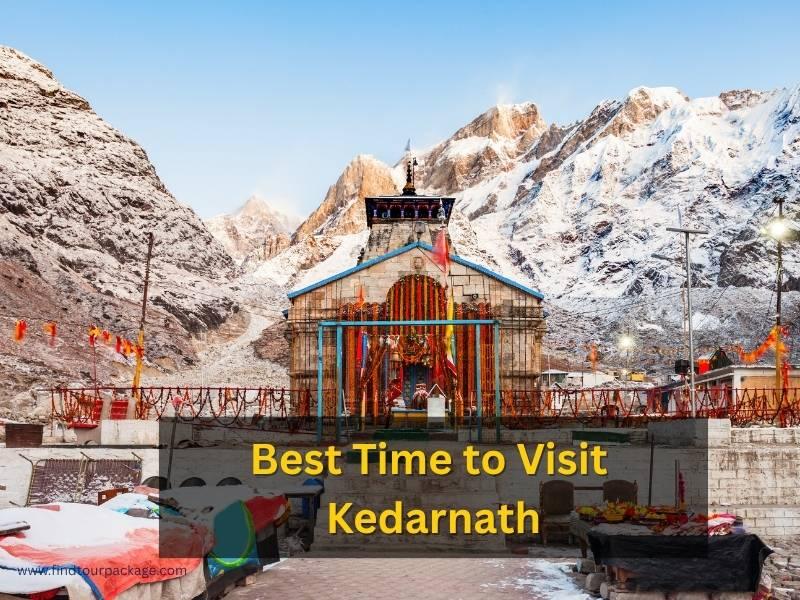
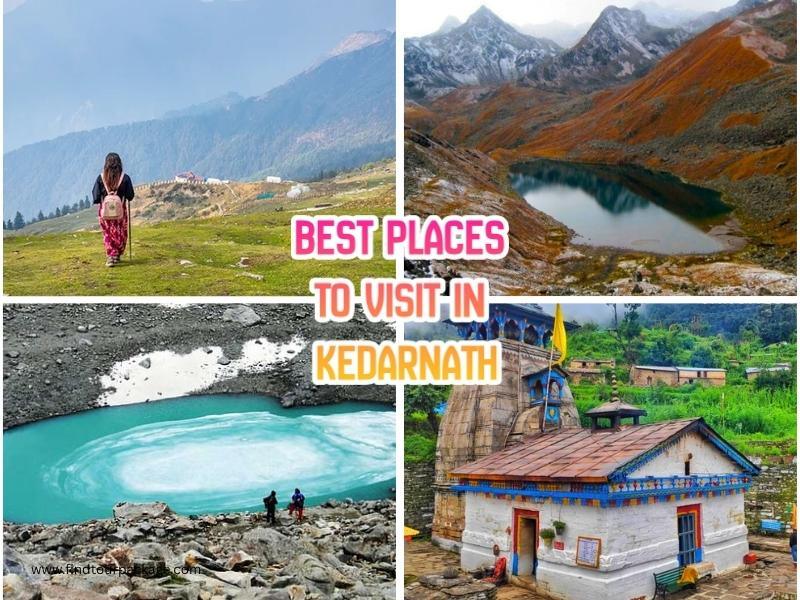
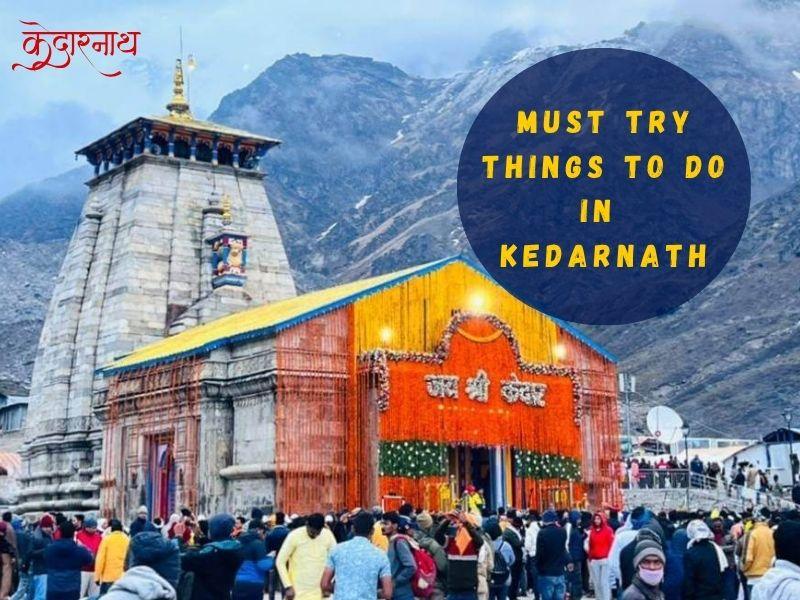


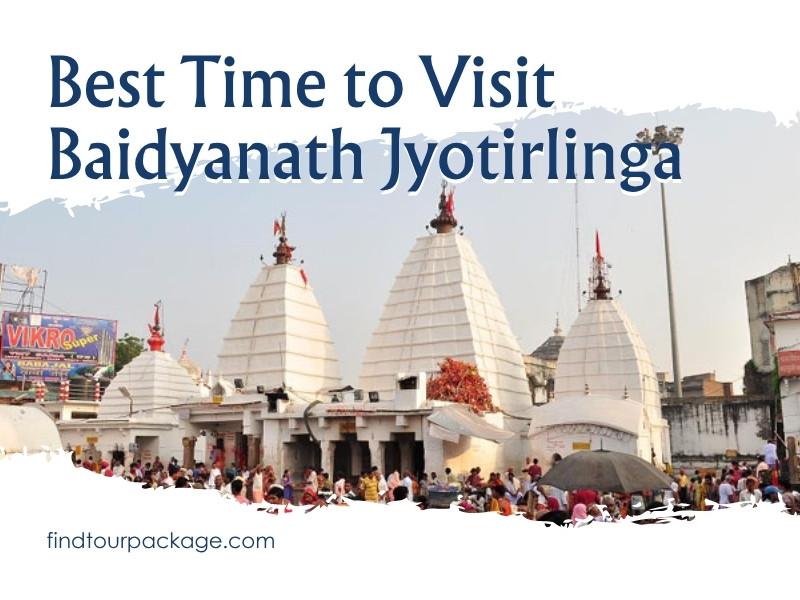
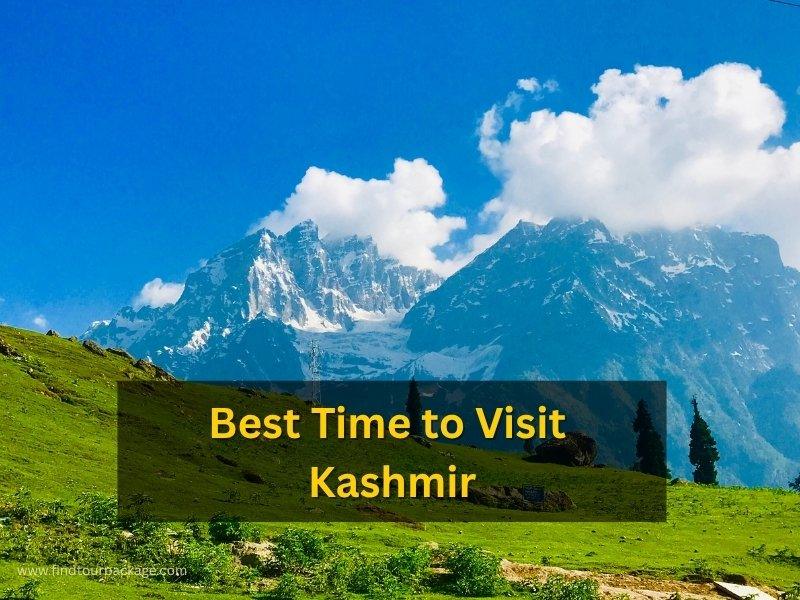






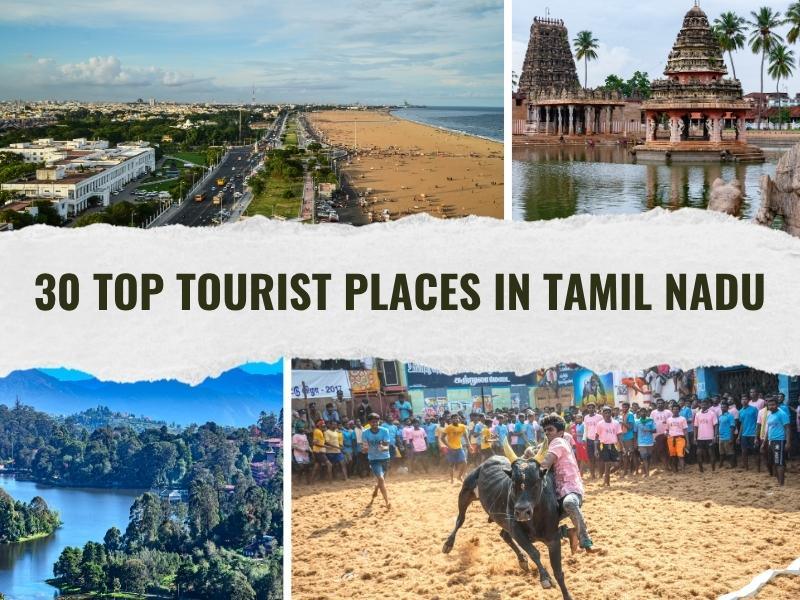



Leave a Comment